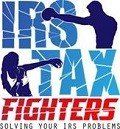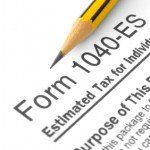Blog Layout
Paying Estimated Tax Payments Form 1040-ES
irstaxfighters • Oct 28, 2016
Generally, the people who need to pay estimated tax payments are people who are self-employed. People who are employees and receive a W-2 annually have their taxes withheld and sent to the IRS for them throughout the year.
For example:
A person who works 40 hours for an hourly rate of $10 earns $400 for that week. However, their employer does not pay them $400 at the end of the week. The employer pays them less than $400 because the employer withholds a portion for the employee’s income taxes, Social Security and Medicare. The employer then pays the withheld portion to the IRS on behalf of the employee.
When a person is self-employed, they have to “withhold” and pay the IRS themselves via estimated tax payments which are also known as form 1040ES payments. The form 1040ES payments are due four times per year: April 15, June 15, September 15 and January 15 of the following year. A person can pay more frequently than four times per year, but should pay at least four times per year if they feel they will owe taxes. Some people may think, “Why do I have to pay form 1040ES estimated tax payments throughout the year rather than on April 15
when my tax return is due?” This is because taxes are actually due throughout the year, and not on April 15. The tax return we file on April 15 is simply a reconciliation to see if we paid too much taxes during the previous year and are due a refund, or paid too little taxes during the previous year and need to pay more.
One question that’s frequently asked is, “How much form 1040ES estimated tax payments do I need to pay?”
Well, the answer to that is not going to be perfect. A good gauge is to look at how much you owed on the previous year’s return and pay that if you feel you are earning about the same amount of money. You would simply divide your previous year’s tax by four and pay that on the 1040ES due dates. Be careful when checking your previous return to see how much taxes you paid. Some people mistakenly use the amount owed figure which simply is the amount underpaid during the previous year. The amount of taxes you paid is on a line that has the sentence, “This is your total tax”. It’s on line 63 of the form 1040 2014. You would then reduce this figure if you were allowed credits like the earned income credit and additional child tax credit. These credits are listed below the “This is your total tax” line.
Another question that is frequently asked is, “What do I do if I can’t afford to pay the correct 1040ES estimated tax payment amount?” Call IRS Tax Fighters
at 1-888-959-2671. The last frequently asked question is, “How do I pay form 1040ES estimated tax payments?” There is more than one way to pay, but an easy way and the way most of our clients seem to prefer is to just write a check and mail it to the IRS. Make sure you write your Social Security number and “1040ES and the appropriate year” in the memo section of the check. Also, write your name and address on the check if it’s not already on the check.
Browse Our Website
Contact Information
Phone:
281-962-0070
Fax:
281-962-0071
Address:
7100 Regency Square Blvd, Suite 246 Houston, Texas 77036
Business Hours:
- Mon - Fri
- -
- Sat - Sun
- Appointment Only
Our Location
Content, including images, displayed on this website is protected by copyright laws. Downloading, republication, retransmission or reproduction of content on this website is strictly prohibited. Terms of Use
| Privacy Policy


